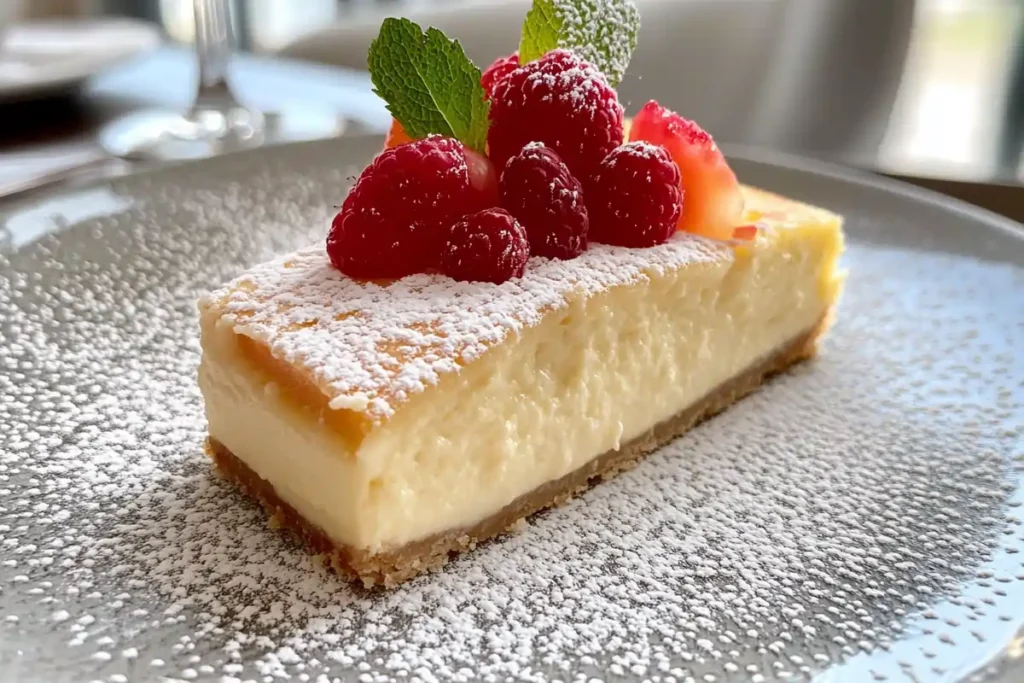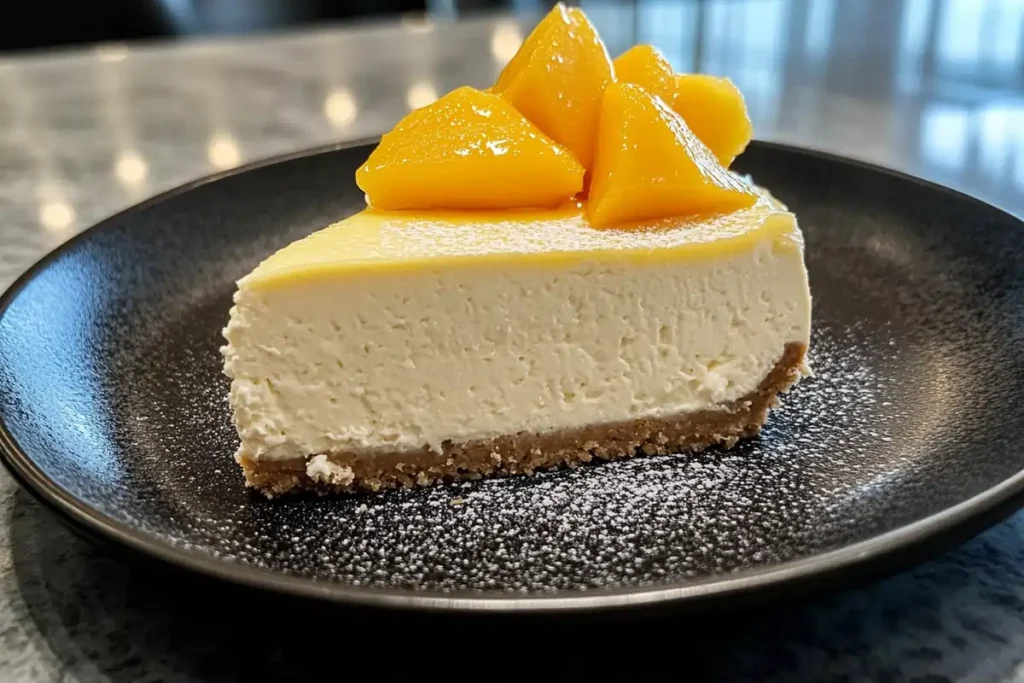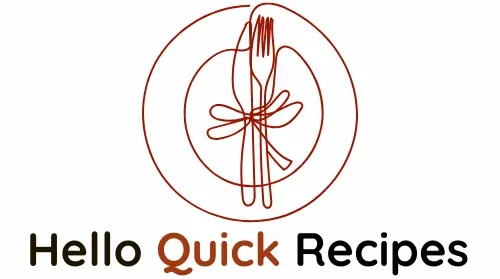Cheesecake is a dessert beloved worldwide for its creamy texture, rich flavors, and versatility. It’s a dessert that has stood the test of time, evolving across cultures and cuisines. While cheesecake itself is universally adored, there’s one debate that divides enthusiasts: is no-bake or baked cheesecake better?
Both styles of cheesecake have their merits, catering to different tastes, occasions, and levels of expertise. Whether you’re drawn to the light, mousse-like texture of a no-bake cheesecake or the velvety richness of a baked one, understanding the distinctions can help you choose the perfect cheesecake for your needs.
In this comprehensive guide, we’ll dive into the history, preparation methods, flavors, storage tips, and creative possibilities of both no-bake and baked cheesecakes. By the end, you’ll have all the insights you need to decide which one deserves the spotlight at your next dessert table.
Table of Contents
The Origins of Cheesecake
Cheesecake’s history dates back thousands of years. The earliest forms of cheesecake were enjoyed in Ancient Greece, where it was often made with simple ingredients like honey, wheat, and cheese. It was even served to athletes during the first Olympic Games as a source of energy.
Modern cheesecakes, as we know them today, evolved over centuries:
- Baked cheesecakes gained popularity in Europe, particularly in Italy and Germany, where ricotta and quark were common ingredients.
- No-bake cheesecakes emerged more recently, becoming popular in the mid-20th century as refrigeration technologies became widespread. These desserts offered a simpler alternative to baking while maintaining a similar creamy texture.
Understanding cheesecake’s origins highlights how both baked and no-bake styles reflect evolving culinary traditions and modern conveniences.
Is No-Bake or Baked Cheesecake Better?
No-Bake Cheesecake
No-bake cheesecakes are all about simplicity and ease. These desserts rely on refrigeration rather than baking to set their structure. Ingredients like whipped cream, cream cheese, or gelatin are used as stabilizers, creating a light and fluffy texture. No-bake cheesecakes are perfect for those who want a quick and fuss-free dessert that’s ideal for warm weather or casual gatherings.
Baked Cheesecake
In contrast, baked cheesecakes are made using eggs, which act as a binding agent during the baking process. The heat transforms the batter into a dense, creamy filling with a velvety texture. Baked cheesecakes, such as the iconic New York-style cheesecake, are known for their indulgent richness and depth of flavor. Baking caramelizes sugars, adding a subtle complexity that’s difficult to achieve in a no-bake version.

Texture and Structure: A Key Difference
The most noticeable distinction between no-bake and baked cheesecakes is their texture.
- No-Bake Cheesecakes:
- Airy, mousse-like texture.
- Soft and creamy, yet firm enough to hold its shape when sliced.
- The lighter texture pairs well with fruit toppings or citrus flavors.
- Baked Cheesecakes:
- Dense and velvety, with a smooth and creamy consistency.
- Firm enough to support heavier toppings like caramel, chocolate ganache, or roasted nuts.
- Richer and more indulgent, making it a favorite for traditional dessert lovers.
The choice between lightness and density often depends on personal preferences and the occasion.
Flavor Profiles: Fresh vs. Indulgent
No-Bake Cheesecake
No-bake cheesecakes deliver a fresher, lighter flavor. This makes them an excellent choice for desserts that highlight refreshing or fruity ingredients like strawberries, lemon, or tropical fruits. They’re also less sweet than baked cheesecakes, which can be an advantage for those who prefer a subtle, less intense dessert.
Baked Cheesecake
Baking enhances flavors through caramelization, adding depth and complexity. This is why baked cheesecakes pair exceptionally well with bold ingredients like chocolate, espresso, or spices like cinnamon and nutmeg. The eggs and baking process also give baked cheesecakes a buttery richness that makes them stand out in formal or celebratory settings.
Preparation: Simplicity vs. Skill
No-Bake Cheesecake
- Ease of Preparation: No baking means no risk of overcooking or cracking. You only need to mix the filling, pour it into a crust, and refrigerate until set.
- Time Required: While it’s quick to assemble, no-bake cheesecake needs at least 8–12 hours in the refrigerator to set properly.
- Beginner-Friendly: This is the perfect choice for those new to dessert-making or without access to an oven.
Baked Cheesecake
- Precision and Skill: Baked cheesecakes require more attention to detail. Using a water bath, managing oven temperatures, and avoiding overmixing are essential to achieving a perfect texture.
- Time Commitment: Between baking, cooling, and chilling, the process can take over 24 hours for the best results.
- Room for Error: Common issues like cracks or overbaking can occur but are fixable with practice and attention to detail.
Storage and Shelf Life
The way you plan to serve and store your cheesecake can also influence your choice.
No-Bake Cheesecake
- Refrigeration: Best consumed within 48 hours, as its soft structure doesn’t hold up as well over time.
- Freezing: Can be frozen but may lose some of its airy texture upon thawing.
Baked Cheesecake
- Refrigeration: Lasts up to a week when stored in an airtight container.
- Freezing: Freezes exceptionally well. Wrap tightly in plastic wrap and foil, and store for up to three months. When thawed, its texture remains intact, making it ideal for make-ahead desserts.
Choosing the Right Cheesecake for the Occasion
Different occasions call for different types of cheesecake. Here’s when to choose each:
No-Bake Cheesecake
- Casual Gatherings: Perfect for picnics, potlucks, or quick weeknight desserts.
- Warm-Weather Events: Its cool and refreshing nature makes it a go-to summer dessert.
- Layered Creations: Ideal for layering with fruit purees, yogurt, or chocolate mousse for a visually stunning presentation.
Baked Cheesecake
- Formal Occasions: A show-stopping choice for weddings, holidays, or elegant dinner parties.
- Indulgent Flavors: Perfect for bold and rich toppings like caramel, chocolate, or spiced fillings.
- Make-Ahead Desserts: Its long shelf life and ability to freeze well make it ideal for preparing in advance.
For an exceptional no-bake recipe, check out this No-Bake Pecan Pie Cheesecake, a crowd-pleaser that’s as easy to make as it is delicious.
Customization and Creativity
Versatility remains among the best things about cheesecake.. Both no-bake and baked cheesecakes offer endless opportunities for customization.
No-Bake Cheesecake Ideas
- Tropical Flavors: Add mango, passionfruit, or coconut for a refreshing twist.
- Creative Crusts: Use crushed Oreos, nuts, or even pretzels for unique bases.
- Layering: Alternate layers of cheesecake with fruit puree or jam for a visually appealing dessert.

Baked Cheesecake Ideas
- Seasonal Ingredients: Incorporate pumpkin, spices, or eggnog for festive variations.
- Elegant Toppings: Finish with ganache, caramel drizzle, or candied nuts for a polished look.
- Swirled Designs: Create marble effects by swirling in chocolate, fruit puree, or caramel.
Advanced Tips for Perfect Cheesecake
No-Bake Cheesecake
- Start with Room-Temperature Ingredients
- While cold cream cheese is great for baked cheesecakes, no-bake cheesecakes benefit from room-temperature ingredients. Softened cream cheese blends more smoothly, avoiding lumps and ensuring a silky filling. Let the cream cheese sit out for at least 30 minutes before mixing.
- Whip the Cream Separately
- If your recipe includes whipped cream, always whip it separately before folding it into the cream cheese mixture. This step creates a light and airy texture, as overmixing can deflate the air and result in a denser cheesecake.
- Use the Right Ratio of Stabilizers
- Stabilizers like gelatin, cornstarch, or even mascarpone cheese are crucial for no-bake cheesecakes to hold their shape. Follow the recipe’s recommended measurements precisely, as too little stabilizer can result in a runny filling, while too much can make it rubbery.
- Refrigerate Overnight
- Patience is key with no-bake cheesecakes. Allow the cheesecake to chill for at least 8–12 hours, preferably overnight, for the filling to set completely. This ensures firm, clean slices when serving.
- Prevent a Soggy Crust
- To avoid the crust becoming soggy from the filling, chill or partially freeze the crust before adding the cheesecake mixture. This extra step helps the crust retain its structure and creates a firm base for the creamy topping.
- Add a Tangy Twist
- A small amount of lemon juice or zest can enhance the flavor of no-bake cheesecakes, balancing the sweetness and adding brightness. This is especially effective for fruit-flavored or summer-inspired cheesecakes.
Baked Cheesecake
- Prepare Your Pan Properly
- Master the Water Bath Technique
- A water bath, or bain-marie, helps maintain an even baking temperature, preventing cracks and ensuring a creamy texture. Place the springform pan in a larger roasting pan and fill it with hot water halfway up the sides. This method adds steam to the oven, preventing the cheesecake from drying out.
- Avoid Overmixing the Batter
- Overmixing incorporates too much air into the batter, which can cause the cheesecake to puff up and then crack as it cools. Mix the ingredients just until combined for the smoothest texture.
- Check for Doneness Correctly
- The center of a baked cheesecake should jiggle slightly when you gently shake the pan. It will firm up as it cools. Overbaking can lead to a dry texture and cracks, so keep an eye on it during the final minutes.
- Cool Gradually
- Rapid cooling can cause the cheesecake to contract and crack. keep the cheesecake inside the oven after baking, and leave the oven door slightly open, about an hour. Once it reaches room temperature, transfer it to the refrigerator to chill completely.
- Use a Hot Knife for Perfect Slices
- To achieve clean, professional-looking slices, dip a knife in hot water, wipe it dry, and then cut through the cheesecake. Repeat this process between slices to prevent the filling from sticking to the blade.
- Decorate Strategically
- If cracks form, use toppings to your advantage! Fresh fruit, whipped cream, ganache, or caramel drizzle can cover imperfections while adding flavor and visual appeal.
- Experiment with Flavors
- Add depth to your cheesecake by infusing the batter with extracts like vanilla, almond, or coffee. For a more festive twist, swirl in pumpkin puree, chocolate, or fruit compote before baking.
Here’s an expanded and detailed version of the “Advanced Tips for Perfect Cheesecake” section to add more value and insight.
Advanced Tips for Perfect Cheesecake
Creating the perfect cheesecake, whether no-bake or baked, requires attention to detail and a few tried-and-true techniques. These tips will help you achieve professional-quality results every time.
No-Bake Cheesecake Tips
- Start with Room-Temperature Ingredients
- While cold cream cheese is great for baked cheesecakes, no-bake cheesecakes benefit from room-temperature ingredients. Softened cream cheese blends more smoothly, avoiding lumps and ensuring a silky filling. Let the cream cheese sit out for at least 30 minutes before mixing.
- Whip the Cream Separately
- If your recipe includes whipped cream, always whip it separately before folding it into the cream cheese mixture. This step creates a light and airy texture, as overmixing can deflate the air and result in a denser cheesecake.
- Use the Right Ratio of Stabilizers
- Stabilizers like gelatin, cornstarch, or even mascarpone cheese are crucial for no-bake cheesecakes to hold their shape. Follow the recipe’s recommended measurements precisely, as too little stabilizer can result in a runny filling, while too much can make it rubbery.
- Refrigerate Overnight
- Patience is key with no-bake cheesecakes. Allow the cheesecake to chill for at least 8–12 hours, preferably overnight, for the filling to set completely. This ensures firm, clean slices when serving.
- Prevent a Soggy Crust
- To avoid the crust becoming soggy from the filling, chill or partially freeze the crust before adding the cheesecake mixture. This extra step helps the crust retain its structure and creates a firm base for the creamy topping.
- Add a Tangy Twist
- A small amount of lemon juice or zest can enhance the flavor of no-bake cheesecakes, balancing the sweetness and adding brightness. This is especially effective for fruit-flavored or summer-inspired cheesecakes.
Baked Cheesecake Tips
- Prepare Your Pan Properly
- Use a springform pan for easy removal of baked cheesecakes. Line the bottom with parchment paper and grease the sides lightly to prevent sticking. Wrapping the outside of the pan with foil is also essential for water bath baking to avoid leaks.
- Master the Water Bath Technique
- A water bath, or bain-marie, helps maintain an even baking temperature, preventing cracks and ensuring a creamy texture. Place the springform pan in a larger roasting pan and fill it with hot water halfway up the sides. This method adds steam to the oven, preventing the cheesecake from drying out.
- Avoid Overmixing the Batter
- Overmixing incorporates too much air into the batter, which can cause the cheesecake to puff up and then crack as it cools. Mix the ingredients just until combined for the smoothest texture.
- Check for Doneness Correctly
- The center of a baked cheesecake should jiggle slightly when you gently shake the pan. It will firm up as it cools. Overbaking can lead to a dry texture and cracks, so keep an eye on it during the final minutes.
- Cool Gradually
- Rapid cooling can cause the cheesecake to contract and crack. keep the cheesecake inside the oven after baking, and leave the oven door slightly open, about an hour. Once it reaches room temperature, transfer it to the refrigerator to chill completely.
- Use a Hot Knife for Perfect Slices
- To achieve clean, professional-looking slices, dip a knife in hot water, wipe it dry, and then cut through the cheesecake. Repeat this process between slices to prevent the filling from sticking to the blade.
- Decorate Strategically
- If cracks form, use toppings to your advantage! Fresh fruit, whipped cream, ganache, or caramel drizzle can cover imperfections while adding flavor and visual appeal.
- Experiment with Flavors
- Add depth to your cheesecake by infusing the batter with extracts like vanilla, almond, or coffee. For a more festive twist, swirl in pumpkin puree, chocolate, or fruit compote before baking.
Universal Tips for Both Types of Cheesecake
- Choose the Right Crust
- Invest in Quality Ingredients
- Cheesecake is a simple dessert, so the quality of ingredients makes a big difference. Use full-fat cream cheese, real vanilla extract, and fresh toppings for the best flavor.
- Taste as You Go
- Before setting or baking the cheesecake, taste the filling to adjust sweetness, acidity, or other flavor components. This ensures the final product matches your preferences.
- Plan Ahead
FAQs About: Is No-Bake or Baked Cheesecake Better?
1. Can no-bake cheesecakes taste as good as baked ones?
Yes! While baked cheesecakes offer a richer and more indulgent flavor, no-bake cheesecakes excel in their lightness and freshness, making them equally appealing.
2. How do I ensure my no-bake cheesecake sets properly?
Refrigerate it for at least 8–12 hours, and use the right ratio of stabilizers like gelatin or whipped cream.
3. What’s the best way to avoid cracks in baked cheesecake?
Using a water bath, ensuring gradual cooling, and avoiding overmixing are key techniques to prevent cracks.
4. Which cheesecake is easier to make?
No-bake cheesecakes are simpler and faster, making them ideal for beginners. Baked cheesecakes require more skill but reward you with a classic, luxurious dessert.
5. Can both types of cheesecake be frozen?
Yes, but baked cheesecakes freeze and thaw better, retaining their texture and flavor.
Conclusion: Is No-Bake or Baked Cheesecake Better
The debate over Is No-Bake or Baked Cheesecake Better? ultimately comes down to preference and context. For a quick, refreshing dessert, a no-bake cheesecake is an excellent choice. If you’re after a rich, traditional dessert with depth and elegance, a baked cheesecake delivers every time.
Both types offer unique experiences and endless customization options, ensuring that cheesecake remains a timeless favorite. Whether you choose to bake or not to bake, the result is sure to delight. Happy cheesecake-making!
Looking for an easy way to start? Explore this No-Bake Pecan Pie Cheesecake recipe to bring a touch of indulgence to your table.

